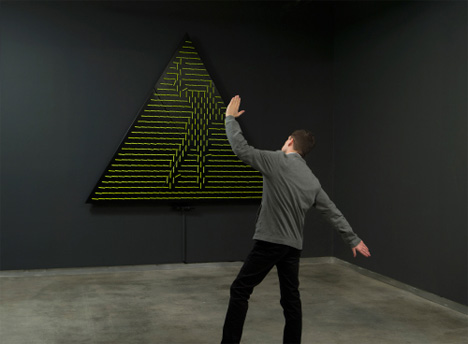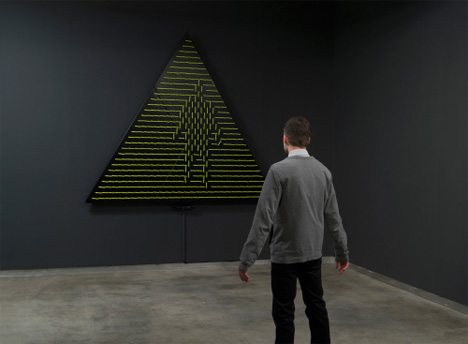Artist Daniel Rozin creates installation pieces that watch you even more closely than you watch them. His Angles Mirror installation features a triangular base with hundreds of yellow pegs. As you approach the sculpture, it springs to life and the yellow pegs start to spin into new positions. After a moment it becomes apparent: the yellow pieces are mimicking your body’s position and movements. As you shift positions, the yellow pegs rearrange their own positions to echo yours.
Rozin calls this and his other similar interactive sculpture “mirrors.” The label is accurate in that the surfaces reflect the postures of the people standing in front of them. They do not provide details of the viewers’ appearances, but they give a minimalist view of one’s outline. The technique takes the focus away from the individual and puts it entirely on the interactive sculptures.
When the viewer moves away from the sculpture and it has no one to mimic, a set of pre-programmed shapes and patterns cycle on the sculpture’s face. The pegs move so gracefully that they almost seem to be living things moving on their own. The robotic mirrors let spectators feel like part of the art installation rather than viewers removed from the art.

